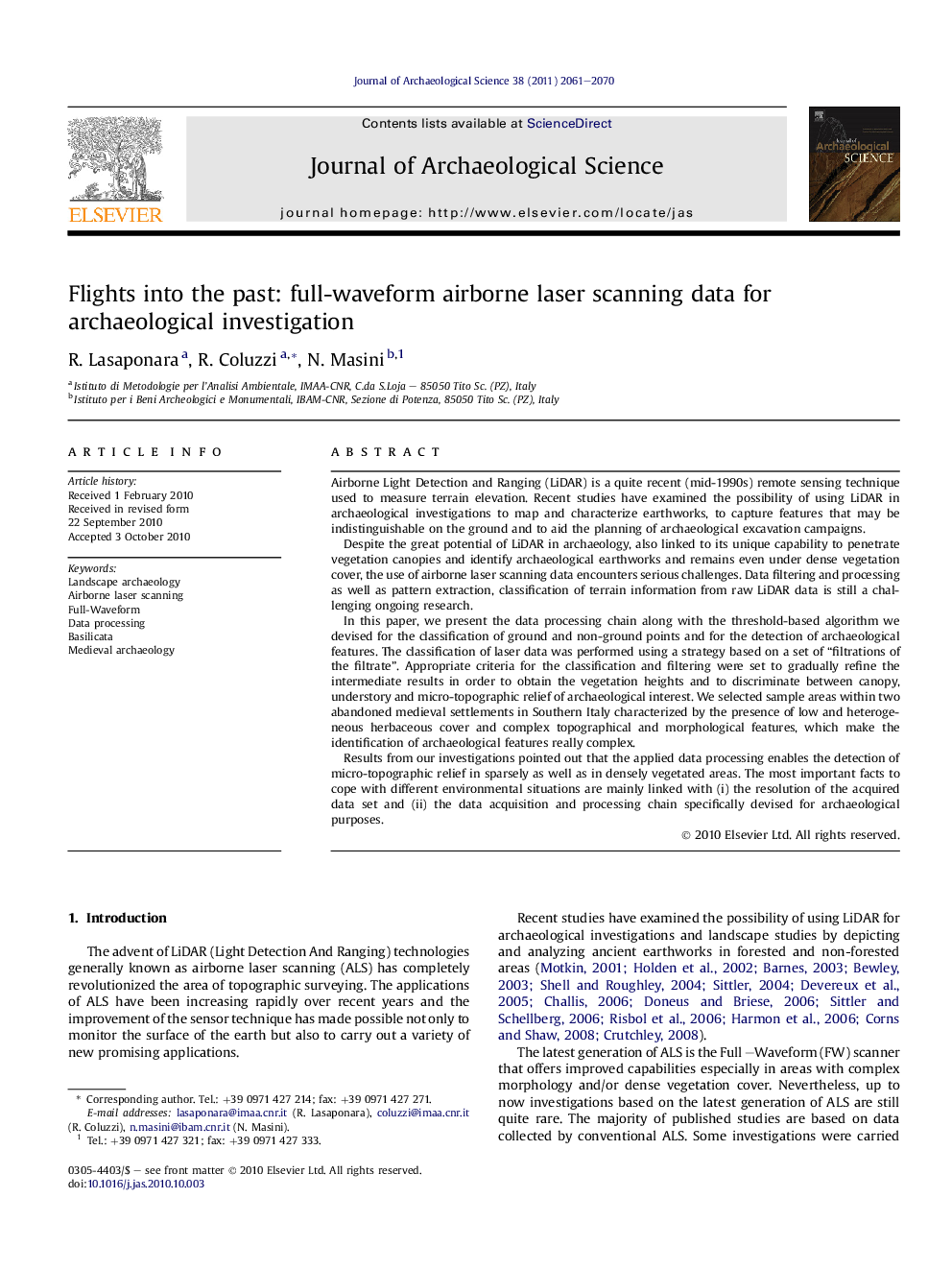| کد مقاله | کد نشریه | سال انتشار | مقاله انگلیسی | نسخه تمام متن |
|---|---|---|---|---|
| 1036312 | 943882 | 2011 | 10 صفحه PDF | دانلود رایگان |

Airborne Light Detection and Ranging (LiDAR) is a quite recent (mid-1990s) remote sensing technique used to measure terrain elevation. Recent studies have examined the possibility of using LiDAR in archaeological investigations to map and characterize earthworks, to capture features that may be indistinguishable on the ground and to aid the planning of archaeological excavation campaigns.Despite the great potential of LiDAR in archaeology, also linked to its unique capability to penetrate vegetation canopies and identify archaeological earthworks and remains even under dense vegetation cover, the use of airborne laser scanning data encounters serious challenges. Data filtering and processing as well as pattern extraction, classification of terrain information from raw LiDAR data is still a challenging ongoing research.In this paper, we present the data processing chain along with the threshold-based algorithm we devised for the classification of ground and non-ground points and for the detection of archaeological features. The classification of laser data was performed using a strategy based on a set of “filtrations of the filtrate”. Appropriate criteria for the classification and filtering were set to gradually refine the intermediate results in order to obtain the vegetation heights and to discriminate between canopy, understory and micro-topographic relief of archaeological interest. We selected sample areas within two abandoned medieval settlements in Southern Italy characterized by the presence of low and heterogeneous herbaceous cover and complex topographical and morphological features, which make the identification of archaeological features really complex.Results from our investigations pointed out that the applied data processing enables the detection of micro-topographic relief in sparsely as well as in densely vegetated areas. The most important facts to cope with different environmental situations are mainly linked with (i) the resolution of the acquired data set and (ii) the data acquisition and processing chain specifically devised for archaeological purposes.
Journal: Journal of Archaeological Science - Volume 38, Issue 9, September 2011, Pages 2061–2070